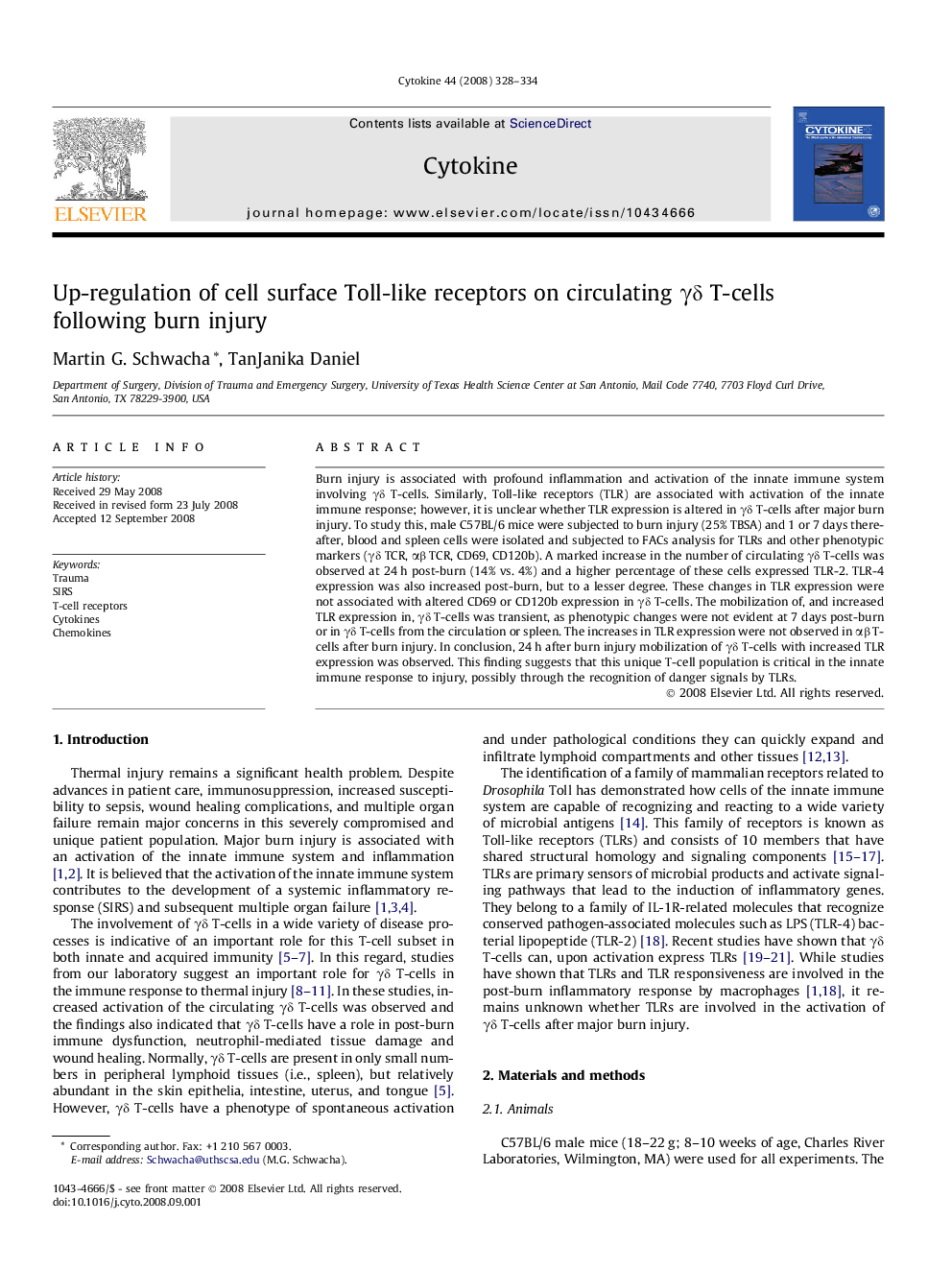| Article ID | Journal | Published Year | Pages | File Type |
|---|---|---|---|---|
| 2795645 | Cytokine | 2008 | 7 Pages |
Burn injury is associated with profound inflammation and activation of the innate immune system involving γδ T-cells. Similarly, Toll-like receptors (TLR) are associated with activation of the innate immune response; however, it is unclear whether TLR expression is altered in γδ T-cells after major burn injury. To study this, male C57BL/6 mice were subjected to burn injury (25% TBSA) and 1 or 7 days thereafter, blood and spleen cells were isolated and subjected to FACs analysis for TLRs and other phenotypic markers (γδ TCR, αβ TCR, CD69, CD120b). A marked increase in the number of circulating γδ T-cells was observed at 24 h post-burn (14% vs. 4%) and a higher percentage of these cells expressed TLR-2. TLR-4 expression was also increased post-burn, but to a lesser degree. These changes in TLR expression were not associated with altered CD69 or CD120b expression in γδ T-cells. The mobilization of, and increased TLR expression in, γδ T-cells was transient, as phenotypic changes were not evident at 7 days post-burn or in γδ T-cells from the circulation or spleen. The increases in TLR expression were not observed in αβ T-cells after burn injury. In conclusion, 24 h after burn injury mobilization of γδ T-cells with increased TLR expression was observed. This finding suggests that this unique T-cell population is critical in the innate immune response to injury, possibly through the recognition of danger signals by TLRs.
